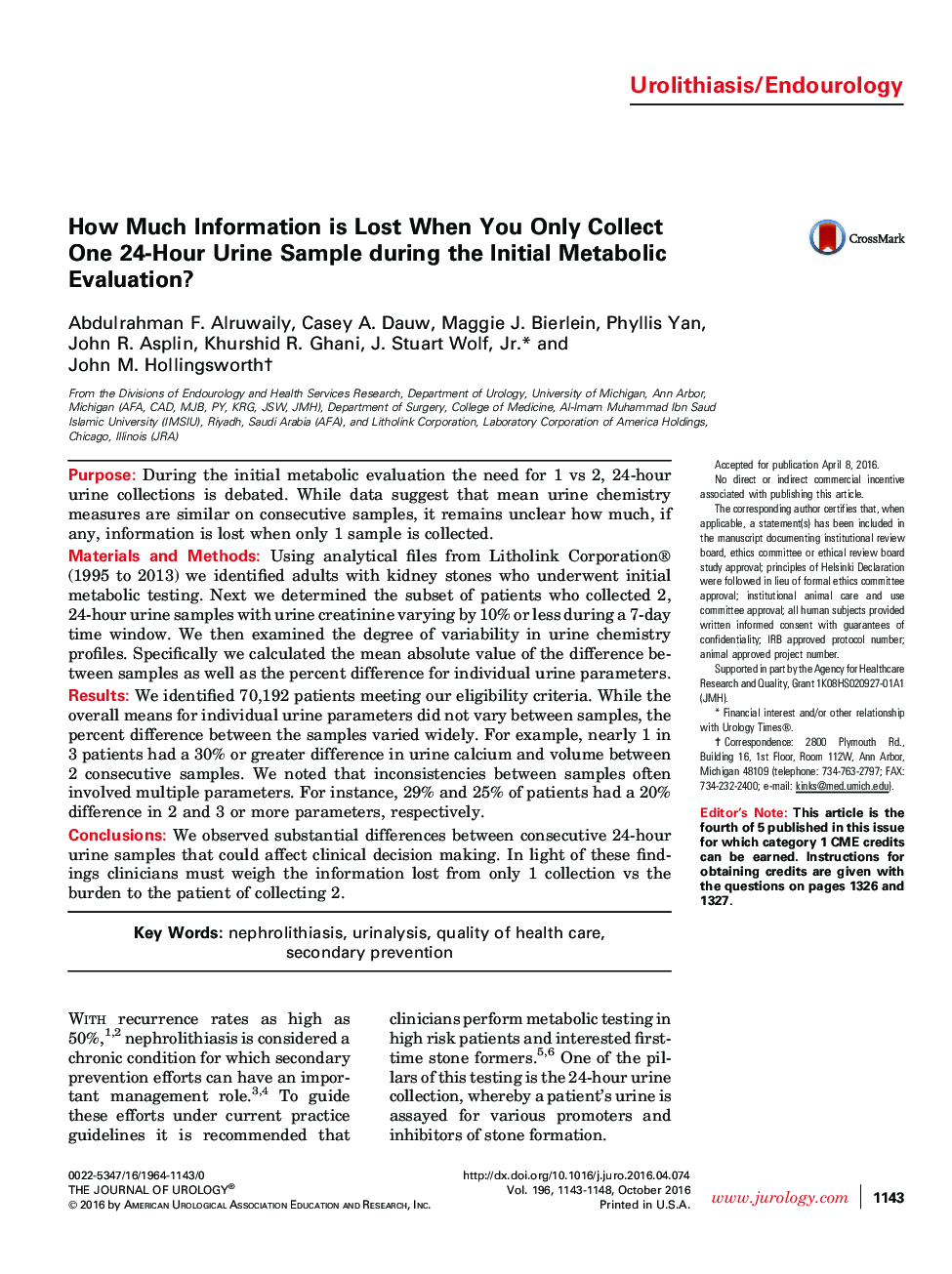| Article ID | Journal | Published Year | Pages | File Type |
|---|---|---|---|---|
| 3857750 | The Journal of Urology | 2016 | 6 Pages |
PurposeDuring the initial metabolic evaluation the need for 1 vs 2, 24-hour urine collections is debated. While data suggest that mean urine chemistry measures are similar on consecutive samples, it remains unclear how much, if any, information is lost when only 1 sample is collected.Materials and MethodsUsing analytical files from Litholink Corporation® (1995 to 2013) we identified adults with kidney stones who underwent initial metabolic testing. Next we determined the subset of patients who collected 2, 24-hour urine samples with urine creatinine varying by 10% or less during a 7-day time window. We then examined the degree of variability in urine chemistry profiles. Specifically we calculated the mean absolute value of the difference between samples as well as the percent difference for individual urine parameters.ResultsWe identified 70,192 patients meeting our eligibility criteria. While the overall means for individual urine parameters did not vary between samples, the percent difference between the samples varied widely. For example, nearly 1 in 3 patients had a 30% or greater difference in urine calcium and volume between 2 consecutive samples. We noted that inconsistencies between samples often involved multiple parameters. For instance, 29% and 25% of patients had a 20% difference in 2 and 3 or more parameters, respectively.ConclusionsWe observed substantial differences between consecutive 24-hour urine samples that could affect clinical decision making. In light of these findings clinicians must weigh the information lost from only 1 collection vs the burden to the patient of collecting 2.
